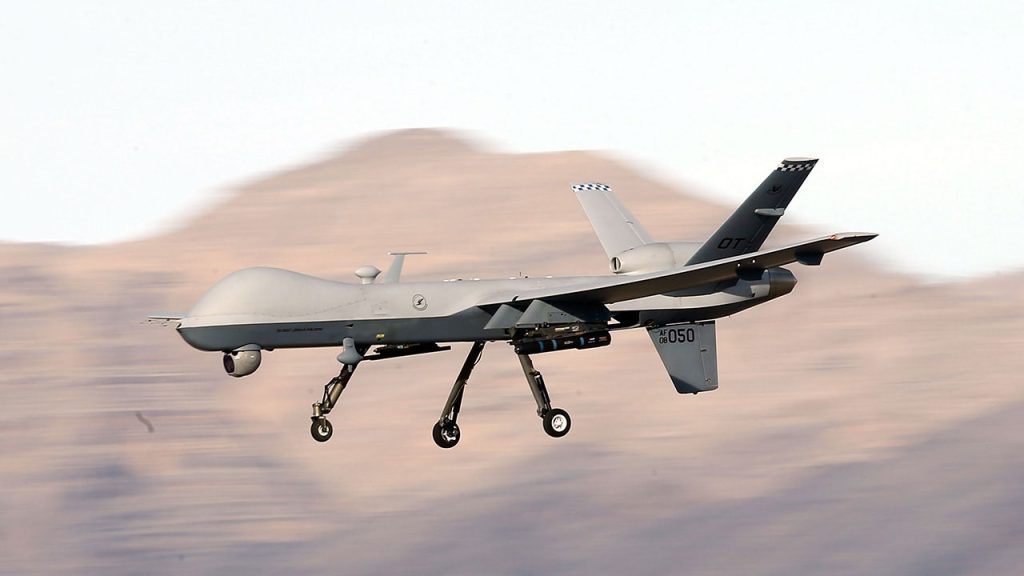Iranian-backed Houthi rebels have claimed responsibility for a U.S. MQ-9 Reaper drone crash off the coast of Yemen, marking the fourth remotely piloted drone brought down by Iranian-proxy groups since November. This has cost the U.S. government upwards of $120 million. The MQ-9 Reapers are primarily used for intelligence gathering but can also be armed with Hellfire missiles. The rebels have brought down three U.S. MQ-9 drones so far, with the most recent incident being on Thursday.
Last fall, the Houthis released a video of a reaper drone they shot down on November 8, shortly after an unprovoked attack by Hamas on Israel. The rebels had also brought down a second MQ-9 earlier this year, while another Iranian-proxy group brought one down in Iraq in January. The MQ-9 Reapers have a wingspan of 66 feet and cost approximately $30 million each. Despite other Iranian-proxy groups ceasing attacks in the Red Sea and Gulf of Aden, the Houthis continue to launch assaults in those areas. They have carried out 131 attacks to date, according to a U.S. defense official.
On Thursday, the Houthis attacked a ship in the Gulf of Aden, following a U.S. military announcement that an allied warship had shot down a Houthi missile targeting a vessel the day before. This incident occurred after a period of relatively few rebel attacks on shipping in the region due to Israel’s ongoing conflict with Hamas in Gaza. The Houthis have been active in launching assaults in the region despite facing US-led airstrikes in Yemen.
The continuous attacks by Houthi rebels in the Red Sea and Gulf of Aden have raised concerns about the safety of vessels traveling through the region. The U.S. government has been forced to allocate significant resources to replace the drones that have been brought down by Iranian-proxy groups. The incidents involving the MQ-9 Reaper drones highlight the ongoing conflict in the region and the potential for increased tensions between Iran, its proxies, and the United States.
The attacks on ships in the Gulf of Aden by the Houthis have highlighted the vulnerability of vessels traveling through the region. The rebel group’s ability to target and bring down drones and launch missile attacks on ships has raised alarms among military officials. The ongoing conflict between the Houthis and the U.S. military, as well as other allied forces, has led to increased tensions in the region.
The situation in Yemen remains volatile, with the conflict between Houthi rebels and the US-led coalition showing no signs of abating. The involvement of Iranian-backed groups in targeting US assets and vessels in the region has raised concerns about the potential for further escalation. The attacks by the Houthis on ships and drones demonstrate their continued aggression and defiance in the face of US-led airstrikes and military operations in Yemen. The ongoing conflict in Yemen and the wider Middle East region continues to pose challenges for US policy and military strategy.


